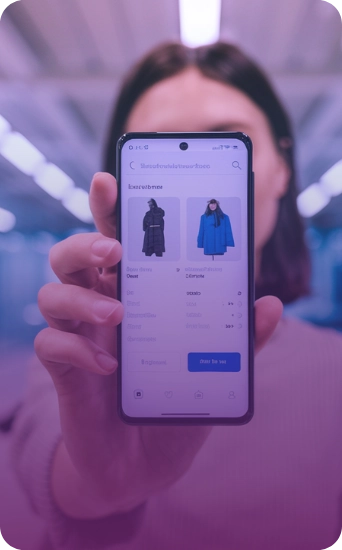
With the popularization of smartphones and the advancement of digital technologies, mobile commerce (aka m-commerce) has become one of the main online shopping channels. On average, 70% of online transactions already take place via mobile devices, according to content published by IT Forum, making it essential for companies to invest in optimized and fluid experiences. In this context, the role of the front-end in the growth of mobile e-commerce is crucial.
The importance of the front-end in mobile commerce
The front-end is the layer of the application that interacts directly with the user and is responsible for the entire visual and functional experience of a website or application. In m-commerce, where the user's attention is limited and competition is fierce, a well-designed front-end can be the difference between conversion and giving up on the purchase.
The main challenges facing the front-end in m-commerce include:
Adaptation for different devices and resolutions
The diversity of mobile devices, with different screen sizes and resolutions, requires responsive and adaptive interfaces. Tools such as media queries in CSS and frameworks like Bootstrap or Tailwind CSS help to create dynamic layouts that adjust perfectly to any device.
Charging speed
Speed is a determining factor in m-commerce. Studies show that 53% of users abandon a site if it takes more than three seconds to load. An efficient front-end reduces loading times by using techniques such as image optimization, asynchronous loading of scripts and lazy loading.
Intuitive and accessible navigation
Usability is essential in m-commerce. Navigation elements such as simplified menus, appropriately sized buttons and straightforward checkout flows ensure an intuitive experience. In addition, following accessibility practices, such as adequate contrast and keyboard navigation, broadens the audience's reach.
User experience: the engine of growth
The front-end in m-commerce is not just a matter of aesthetics; it is the engine behind a positive shopping experience. See how it drives growth:
Advanced interactivity
With the use of modern technologies such as JavaScript and frameworks like React or Vue.js, it is possible to create highly interactive interfaces that engage the user. For example, product carousels, dynamic filters and personalized suggestions make the experience more enjoyable.
Integration with mobile functionalities
The m-commerce front-end can take advantage of native device features, such as geolocation, push notifications and biometric authentication, to offer personalized and secure experiences.
Data-driven design
Analysis tools such as Google Analytics and Hotjar, help to understand user behavior. Based on this data, the front-end can be continually adjusted to meet the preferences of the target audience.
Best practices for an efficient front-end in mobile commerce
To ensure a positive impact on m-commerce, the front-end must follow some good practices:
Mobile-first design
Adopting a mobile-first approach means designing with mobile devices in mind first. This guarantees light, functional and intuitive interfaces, prioritizing the essential elements.
Charging time
Loading speed is fundamental to success in m-commerce. Use techniques such as image compression, use of CDN (Content Delivery Network) and minimizing CSS and JavaScript files. Also, implement strategies such as lazy loading to load only the visible elements and improve the overall performance of the page.
Use of PWA (Progressive Web Apps)
PWAs combine the best features of websites and native applications. They offer fast loading, can work offline and are installable on the device, providing an app-like experience.
Continuous testing and iteration
Carrying out regular usability tests is essential. Tools such as BrowserStack and Lighthouse allow you to simulate different conditions of use and evaluate the performance of the interface.
Focus on mobile SEO
A well-structured front end must take into account the good practices of SEO for mobile devices, such as friendly URLs, correct use of tags and reduced response times. This helps to improve search engine positioning, attracting more qualified traffic.
The growth of mobile commerce is directly linked to the quality of the experience offered to the user, and the front-end plays a strategic role in this process. Companies that invest in responsive, interactive and optimized interfaces are better prepared to win over and retain customers in the mobile environment.
By aligning technology, design and usability, the front-end not only facilitates use, but also creates emotional connections that turn visitors into loyal consumers. In the competitive m-commerce market, offering an impeccable experience is not just a differentiator, it's a necessity.










